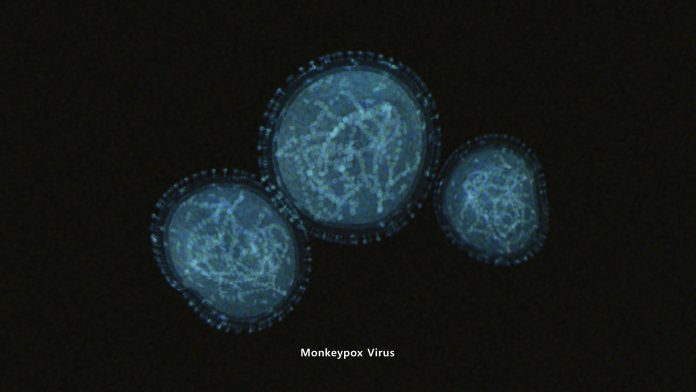
An international collaboration of clinicians has published a new case study on the impacts of monkeypox infection on women during the 2022 outbreak.
The study, which was led by Professor Chloe Orkin at Queen Mary University of London, covered the effects of the disease on cisgender (cis) and transgender (trans) women and non-binary individuals assigned as female at birth.
The study provides insight into risk factors, routes of transmission and other clinical features of monkeypox infection in women. According to the researchers these groups have been underrepresented in research and little is known about how the disease affects women. They hope their data will help to guide the international response to the ongoing monkeypox outbreak.
The full case study has been published in The Lancet.
Shaping monkeypox policy for women
The study has been influential in shaping international case definitions and contributed to the global response to monkeypox. The case study provides the most comprehensive overview of the ongoing monkeypox outbreak happening across the world.
Clinical professionals from 15 separate countries contributed data from 136 women (69 cisgender and 62 transgender) and five non-binary people, all of whom had a confirmed monkeypox infection in 2022.
In a previous study, sexual contact was suspected as the route of transmission for nearly all men. In the latest study of women, sexual contact is likely to be the route of transmission for most, but not all cases representing around 73% of all transmissions.
Separating the results of cis and trans women reveals important insights; for example, sexual contact was the most common route of transmission for trans women, however, nearly a quarter of cis women in the study are suspected to have contracted monkeypox infection without any sexual contact.
Monkeypox had a similar clinical presentation in women as it did in men, such as mucosal sores and anal and genital sores. The researchers found that these symptoms were commonly misdiagnosed as sexually transmitted infections, especially in cis women.
It is harder for women to access treatment for the virus
Data showed that men and trans women were more likely to access sexual health and HIV clinics, whereas most cis women attended a wider range of clinical settings such as emergency departments, primary care, and hospitals. This highlights the need for better education for health professionals who do not work in sexual health clinics to ensure that symptoms are not misdiagnosed.
In this study, vaginal swabs were used to identify monkeypox DNA, this method effectively found the virus in 14 out of 14 samples. This strengthens the likelihood of sexual transmission of the virus through bodily fluids and skin-to-skin contact. Despite 26% of cis women living with children, only two children acquired monkeypox. This was a reassuring finding as children generally experience worse effects than adults.
“During the global outbreak, case definitions have rightly focused on the most affected groups, sexually active men who have sex with men. The public health response has been tailored to reach this group,” said Chloe Orkin, lead author and professor of HIV medicine at Queen Mary University of London and Director of the SHARE collaborative.
“However, as the outbreak progresses, it’s important to also focus attention on underrepresented groups such as women and nonbinary individuals to better understand their risk. It is important to describe how the infection manifests in women as this has not been characterised until now and doctors need to be able to recognise the disease. These learnings will help inform and tailor effective public health measures to be inclusive of these groups,” concluded Orkin.
























